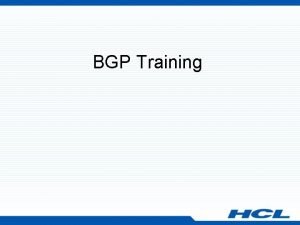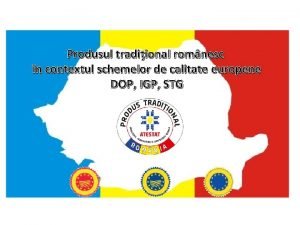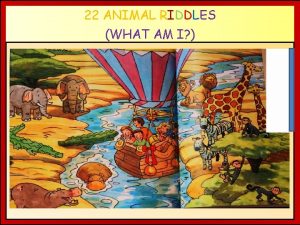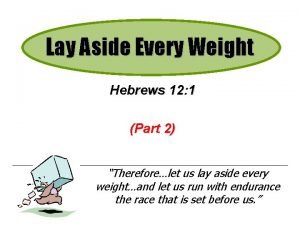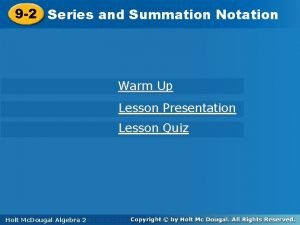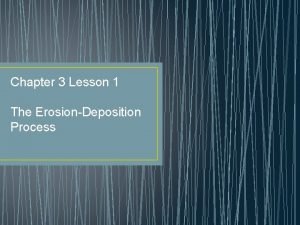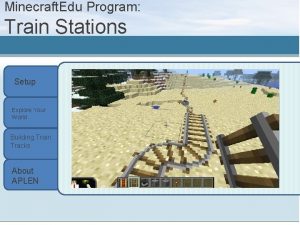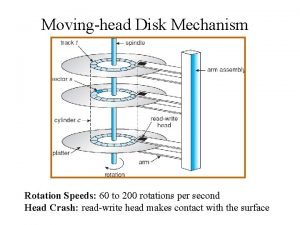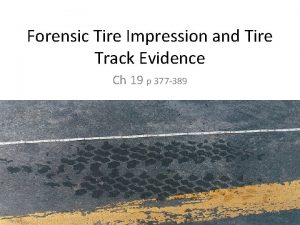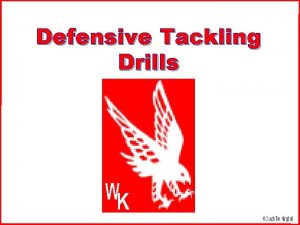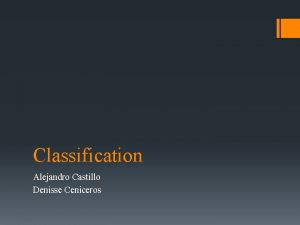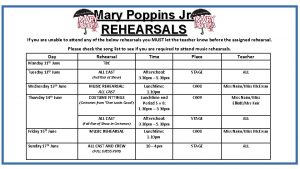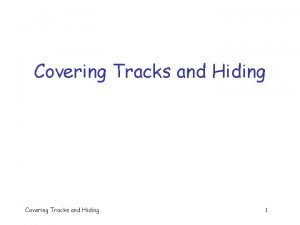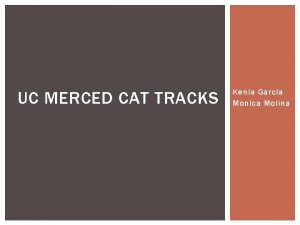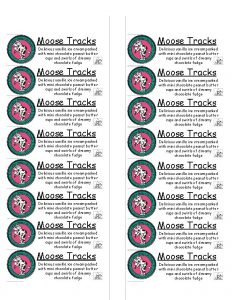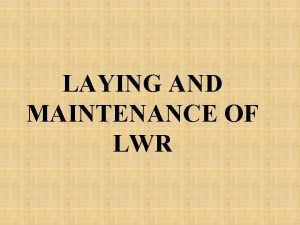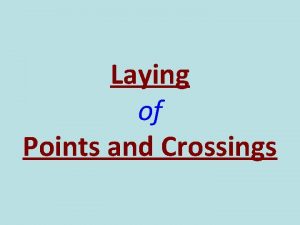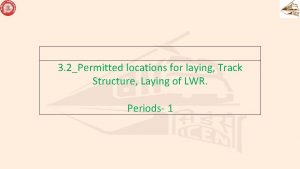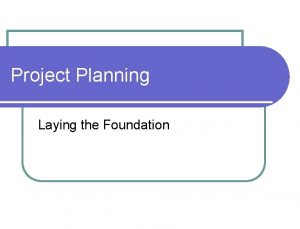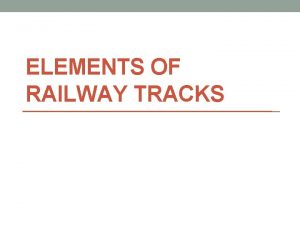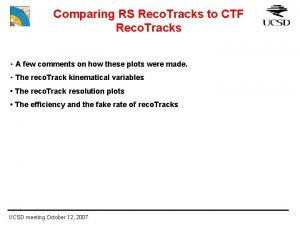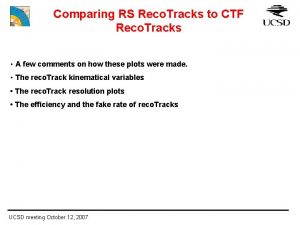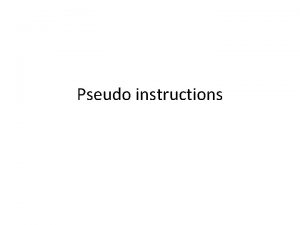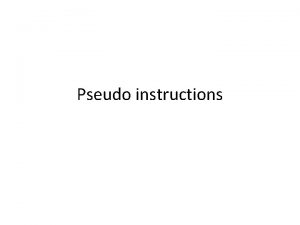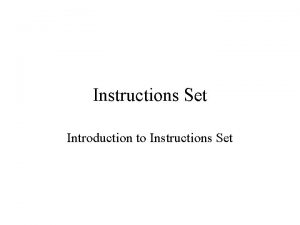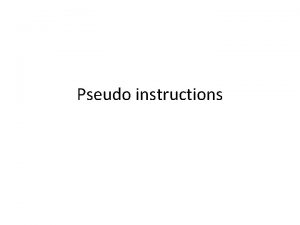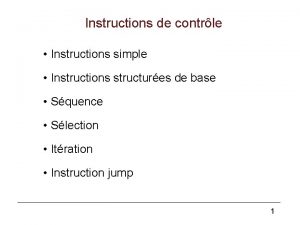Laying tracks for IGP trials Instructions for Tracklayers


































- Slides: 34

Laying tracks for IGP trials Instructions for Tracklayers And Tracking Supervisors Author: Frans Jansen Presented at the Canadian Working Dog Federation IPO-FH Championship, October 19, 2018

Different types of tracks Track aging (minutes) Max Working Time IGP 3 60 20 600 paces # articles 3 FH V 60 20 3 600 paces FH 1 180 30 4 1200 paces FH 2 1800 paces 180 45 Points per article Holding the track Specific 7 7 7 - 79 Stranger track 7 7 7 - 79 Master track 5 5 5 6 7 articles, each 3 points 180 45 7 articles, each 3 points Cross-track 79 Stranger track - 30 Minutes before working the track - 2 crossings - Not in 1 st or last leg - Not twice in the same leg 79 Stranger track Can have change of cover, but not mandatory - 30 Minutes before working - 2 crossings - Not in 1 st or last leg - Not twice in the same leg 79 Stranger track Can have change of cover, 2 but not mandatory - 30 Minutes before working - 2 crossings - Not in 1 st or last leg - Not twice in the same leg IGP FH 1800 paces 2 tracks on 2 days (1 track per day with different tracklayer) 2

What is a track? When walking, the soil, vegetation and small insects are “damaged“ by the tracklayer. Parts of this altered soil, vegetation and small insects also stick to the shoes/boots of the tracklayer and will be carried along every footstep of the track. At the same time, dust, skin particles, body odours, shoes particles will drop on the track, creating a specific scent path. 3

What is a track? On hard soil there will be less damage but more shoe/boot particles will be left on the ground. Sometimes a track is not visible at all. The single human footprints in a track are like a chain of prints in which chemical and biochemical reactions / convertions start right away. 4

What is a track? For instance: formation of gas, growth of bacteria/microbes or killed small insects, decomposition of vegetation. Scent is also changing under the influence of weather conditions (heat, wind, rain, etc) 5

What is a track? Because of these chemical reactions and external conditions, the smell of a track never stays the same. It varies with time, every minute and every hour. 6

What is a track? If you know what a track is and how the scent of the track is created, you will be able to better understand how the dog's nose work. 7

What is a track? After about 15 - 20 minutes the typical scent will be developed in a way that is well recognizable for the dog. Keep this in mind during training! 8

Important for the tracklayer Weather conditions The weather conditions are important for the development and preservation of a track. Favourable Low humidity No wind Light rain Light snow Unfavourable Heavy rain High temperature and dryness Heavy snowfall on the layed track Storm 9

Important for the tracklayer Ground cover types Favourable Ploughed field Hay grass Woods Soft, untouched soil Unfavourable Hard packed dirt Stone Asphalt Concrete Roads Fields with recent heavy human traffic 10

Important for the tracklayer 11 When laying tracks, it is VERY important to consider to the direction of the wind 11

Trials / Championships It is almost impossible to create the same track for every participant at a trial. Especially during big events, that take place over several days. Different tracking fields, weather variations, different tracklayers etc. will affect tracking performances. 12

Trials / Championships Well educated and trained tracklayers is a must. 13

Trials / Championships At a trial, every dog handler has the right to have a properly layed track, and similar difficulties for all competitors. 14

Tracking Supervisor Must be a Judge or a very experienced tracking dog trainer Must be mobile Must, for international events, be able to speak several languages 15

Organization chart Organizer Tracking supervisor Judge Tracklayer Dog 16

Important for the tracklayer Clear knowledge of the rules and regulations For IGP 3 tracks the 2 nd article has to be placed on the judge’s instructions. Knowledge of how the articles have to be placed on the track and the possible variations. 17

Important for the tracklayer Knowledge of all track shapes Ability to make clear drawings of a track for the judge Laying the track, corners and articles according to the regulations and to the drawing 18

Important for the tracklayer No smoking during laying the tracks No discussions / talks before or after the start of the tracks (How the track is layed, articles, etc. ) When problems arise, must involve the Judge or supervisor!! 19

Important for the tracklayer All tracklayers must wear similar shoes/boots Have paper and pen to make a proper drawing of the track and all specifics of the tracks Make sure track drawings are clear to the Judge A well “organised“ tracking phase, sets a good example during the whole event NO alcohol consumption during the tracklaying 20

Important for the tracklayer Lay tracks with the prescribed steps. Count the steps (according to the regulations) a week before the event Ensure correct time interval between the tracks Starting time for laying tracks must be logical and time saving 21

Important for the tracklayer Before starting to walk, mark the specifics of the terrain on the drawing. Walk straight Good laying of the articles on the track 22

Important for the tracklayer Laying Cross-tracks (FH 1, 2, IGP-FH) Follow instructions for the cross track Put the markers for the cross track on the right Lay the cross track as instructed Walk the tracks in normal steps 23

Important for the tracklayer Do not shuffle or stomp at corners or on the places where the articles are to be placed Distance between 2 steps about 50 -60 cm (20 -24 inches) A time schedule is mandatory A contact person who is local and appointed by the organisation must be available at all times Daily drawing of the tracks 24

25 Important for the championship organize Do not accept to much differences in tracking fields Take good care of Tracklayers and Judges Check regularly the Tracklayers, the tracking fields and the tracks drawings Have staff to guide handlers to the tracking fields, transport to the start of the tracks, etc.

26 Important for the championship organize Inspect the tracking fields on a regular basis before the event Make a plan for all the tracks Give clear instructions to the tracklayers

27 Important for the championship organize Have alternate tracklayer(s) available, in case a change is necessary Build a “Tracking Team“ and make someone responsible for it Every evening, the tracking supervisor has to check the tracks for the next day of the trial

Possible layouts of IGP 3 tracks road road Note: The distance between 2 tracks must be at least 20 meters (60 feet) 28

Important for the tracklayer Tracks must be layed according to the current regulations Corners must be layed as closed angles. In wich way will the articles be put on the track? 29

Important for the tracklayer Steps at the start v Stand still for a moment at the start v Start flag should not be made of steel/iron. Placed at the left side of the track v No shuffling/stomping at the start 30

Important for the tracklayer How to lay corners Closed angle 31

Important for the tracklayer How to lay articles v Do not stand still v Short step in between v No shuffling/stomping 32

Possible IGP 3 track shapes 33

Thank you for your attention! 34
 Isis igp
Isis igp Igp argane
Igp argane Igp tracking rules
Igp tracking rules Benefits of language learning
Benefits of language learning Well-known discretionary attributes
Well-known discretionary attributes Expand igp in microfinance
Expand igp in microfinance Dop igp stg
Dop igp stg I am a big animal
I am a big animal Quality culture
Quality culture Lay aside every weight example
Lay aside every weight example Laying the tablecloth
Laying the tablecloth Canyouunit
Canyouunit Egg laying animals
Egg laying animals How to express summation notation
How to express summation notation Laying aside all malice
Laying aside all malice What is the laying down or settling of eroded material
What is the laying down or settling of eroded material Flowers laying on table
Flowers laying on table Wagon tracks in welding
Wagon tracks in welding Psy 3024 ucf
Psy 3024 ucf Minecraft edu
Minecraft edu The head of moving head disk with 100 tracks
The head of moving head disk with 100 tracks Forensic tire tread analysis
Forensic tire tread analysis Sideline tackling drills
Sideline tackling drills Historical hurricane tracks
Historical hurricane tracks Mary poppins jr soundtrack
Mary poppins jr soundtrack Why are footprints easier to cast than tire tracks
Why are footprints easier to cast than tire tracks Covering tracks
Covering tracks Accenture carrer level
Accenture carrer level Tams ut austin
Tams ut austin Kat tracks shsu
Kat tracks shsu Empowerment technologies ict for professional tracks
Empowerment technologies ict for professional tracks Cattracks uc merced
Cattracks uc merced Mucoid vs mucopurulent
Mucoid vs mucopurulent Tracks
Tracks Pgp goals arkansas
Pgp goals arkansas




